
Lexus RC F (2014-2024) engines, drive and performance
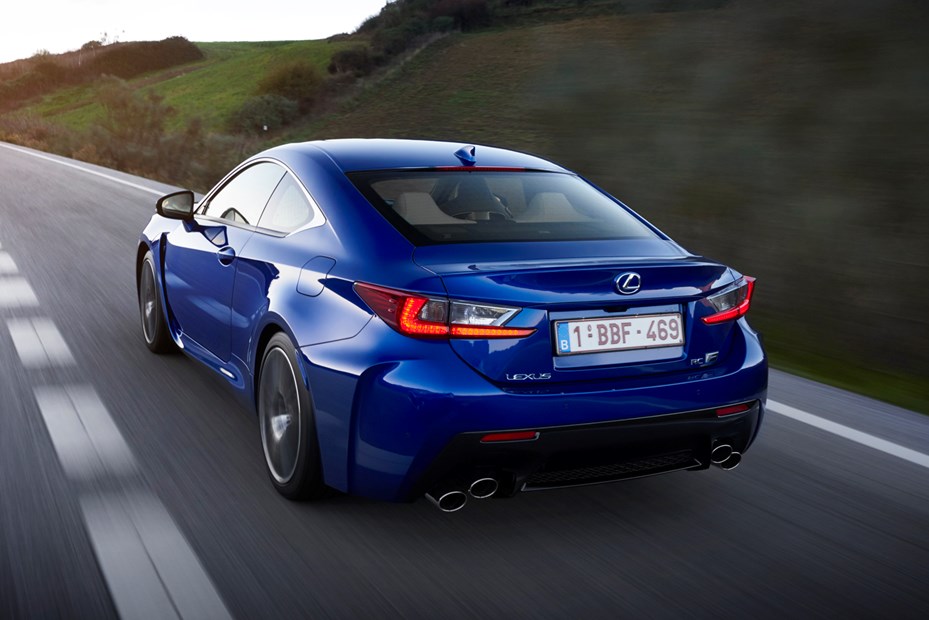
Back to back with a new BMW M car, Lexus RC F performance may not be all that impressive – thanks to the naturally aspirated engine and high-up narrow-banded power delivery of the Japanese model it’s a harder car to gather speed with than its German rival. You’d sum up the experience as rather busy in fact, both in terms of gear-changing and the way in which it propels itself forward.
A look at the facts and figures reveals the Lexus makes a not inconsiderable 471bhp, but you have to wait until a near-redline figure of 7,100rpm. You’ll be staring at a rev-counter needle between 4,800rpm and 5,600rpm before you see peak torque of 530Nm as well. Which means you really need to be in the correct gear if you want to make progress – most usually third and sometimes as low as second – as too often you find yourself languishing in eighth requiring multiple downshifts from the gearbox.
Which proves rather frustrating, as the traditional automatic is slow to react and makes multiple step changes down the ratios rather than block shifting like the latest twin-clutch efforts from the likes of BMW can. Make no mistake, a faster, more faithfully reactive gearbox could transform this car.
For all of that though, the naturally aspirated 5-litre V8 engine is an absolute delight to exploit, both in terms of aural edification and punch. Based on the same block that powered the old Lexus IS F saloon, with reworked internals for both more power and efficiency, it makes the most fantastic old-school noise when the exhaust’s butterfly valves open beyond 3,500rpm. Addictively so.
There are some extra engine notes filtered through to the cabin, but they’re not the synthesised sound employed by BMW.
And it gathers speed convincingly too, with such refinement that it’s easy to find yourself travelling far faster than you might have expected to. Nail it off the line and aside from the tyre smoke there’s the potential to complete the 0-62mph dash in just 4.5 seconds, while the top speed is artificially limited to 168mph (no doubt to top-trump its German rivals’ standard 155mph blanket limit).
You really do have to be in the mood for it, exploring the top-end of this engine’s rev range. It’s clearly a relaxing enough car to drive slowly, if you can resist the urges, with a docile throttle response and a smooth-enough shifting gearbox for around town. But to drive it quickly, making the most of the power offered, requires some work and commitment from the person behind the steering wheel.
The Lexus RC F is not a light car, with most models (the Carbon edition is slightly lighter thanks to the weaved bonnet etc) weighing in around 1,800Kg. And no matter what intricate chassis systems are employed – and the RC F has more than few – it can’t entirely combat the laws of physics here. It has a good go, of course, but on the track – admittedly an area many RC F owners won’t explore – there’s no escaping that heft when cornering at the extreme. There’s less understeer than prejudice would suggest though.
And in the dry the Lexus displays an abundance of grip, possibly thanks to a relatively progressive delivery of power, a sensation not quite as prevalent in its turbocharged rivals. When it does overcome the rear wheels the RC F does so in an entirely relaxed manner, and though you’ll have to be quick to control the resulting slide it’s not as frantic as some other models.
You’ll have to turn all the systems off to do so though, as in default mode the RC F is as docile to drive as its CT200h hatchback counterpart, with the electronic stability control keeping things in check.
Thanks to the Vehicle Dynamics Integrated Management (VDIM) system there are four different modes to the stability system’s reign from Normal through Sport and Off to Expert. Normal does what it says on the tin, as does off (you’re all on your own here) while Sport offers race-track friendly parameters for the traction control, ABS and stability system. Expert is a little confusing though, with a similar setup to Off, but with an added final-moment safety net developed to help prevent a spin.
The optional Torque Vectoring Differential (TVD) – standard on the RC F Carbon – adds another three modes to the car’s responses with Standard, Slalom and Track options. As a default the Standard mode settles faithfully between the optimum agility and stability, while Slalom increases agility and sharpness of turn-in, and Track increases high speed cornering stability.
You can also change the car’s character with Drive Mode Select, offering a further five different modes; Eco, Normal, Sport S, Sport S+ and Snow. Altering the response of the engine output, throttle response and air conditioning – there’s no adaptive damping here, like its BMW rival – it also alters the instrument panel display and the slight amount of augmented sound piped into the cabin.



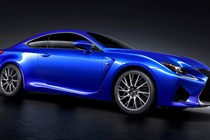

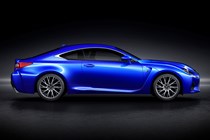

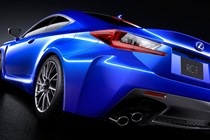
.jpg)
.jpg)
.jpg)
.jpg)
.jpg)
.jpg)
.jpg)

.jpg)
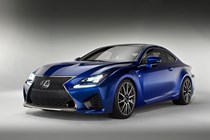

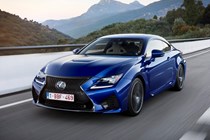

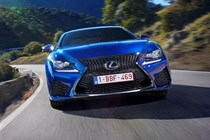


.jpg)
.jpg)
.jpg)
.jpg)
.jpg)
.jpg)
.jpg)
.jpg)
.jpg)
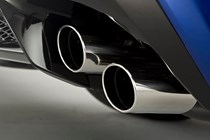
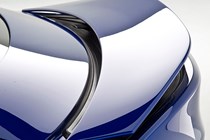
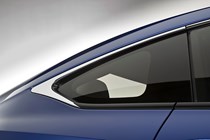

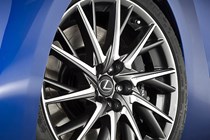

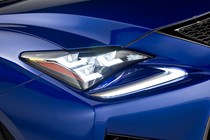
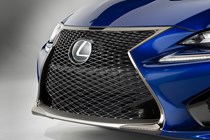
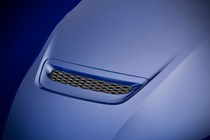
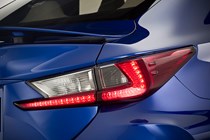

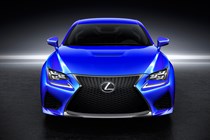

.jpg)
.jpg)
.jpg)
.jpg)
.jpg)
.jpg)
.jpg)
.jpg)
.jpg)
.jpg)
.jpg)
.jpg)
.jpg)
.jpg)



.jpg)
.jpg)
.jpg)
.jpg)
.jpg)
.jpg)
.jpg)
.jpg)
.jpg)
.jpg)
.jpg)
.jpg)
.jpg)
.jpg)
.jpg)
.jpg)
.jpg)
.jpg)
.jpg)
.jpg)
.jpg)
.jpg)
.jpg)
.jpg)
.jpg)
.jpg)
.jpg)
.jpg)
.jpg)
.jpg)
.jpg)
.jpg)
.jpg)
.jpg)
.jpg)
.jpg)
.jpg)


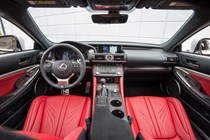
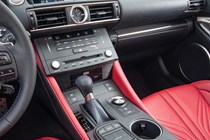
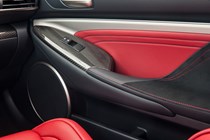
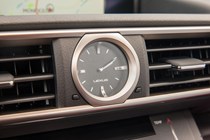
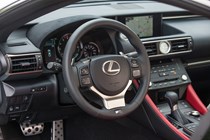

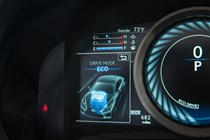


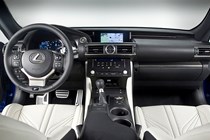



.jpg)
.jpg)
.jpg)
.jpg)
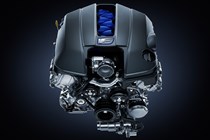
.jpg)
.jpg)
.jpg)
.jpg)
.jpg)






.jpg?quality=50)
.jpg?quality=50)
.jpg?quality=50)
.jpg?quality=50)
.jpg?quality=50)
.jpg?quality=50)
.jpg?quality=50)

.jpg?quality=50)







.jpg?quality=50)
.jpg?quality=50)
.jpg?quality=50)
.jpg?quality=50)
.jpg?quality=50)
.jpg?quality=50)
.jpg?quality=50)
.jpg?quality=50)
.jpg?quality=50)













.jpg?quality=50)
.jpg?quality=50)
.jpg?quality=50)
.jpg?quality=50)
.jpg?quality=50)
.jpg?quality=50)
.jpg?quality=50)
.jpg?quality=50)
.jpg?quality=50)
.jpg?quality=50)
.jpg?quality=50)
.jpg?quality=50)
.jpg?quality=50)
.jpg?quality=50)



.jpg?quality=50)
.jpg?quality=50)
.jpg?quality=50)
.jpg?quality=50)
.jpg?quality=50)
.jpg?quality=50)
.jpg?quality=50)
.jpg?quality=50)
.jpg?quality=50)
.jpg?quality=50)
.jpg?quality=50)
.jpg?quality=50)
.jpg?quality=50)
.jpg?quality=50)
.jpg?quality=50)
.jpg?quality=50)
.jpg?quality=50)
.jpg?quality=50)
.jpg?quality=50)
.jpg?quality=50)
.jpg?quality=50)
.jpg?quality=50)
.jpg?quality=50)
.jpg?quality=50)
.jpg?quality=50)
.jpg?quality=50)
.jpg?quality=50)
.jpg?quality=50)
.jpg?quality=50)
.jpg?quality=50)
.jpg?quality=50)
.jpg?quality=50)
.jpg?quality=50)
.jpg?quality=50)
.jpg?quality=50)
.jpg?quality=50)
.jpg?quality=50)















.jpg?quality=50)
.jpg?quality=50)
.jpg?quality=50)
.jpg?quality=50)

.jpg?quality=50)
.jpg?quality=50)
.jpg?quality=50)
.jpg?quality=50)
.jpg?quality=50)